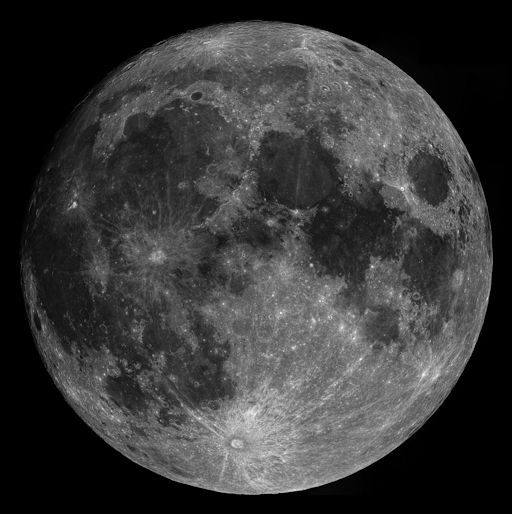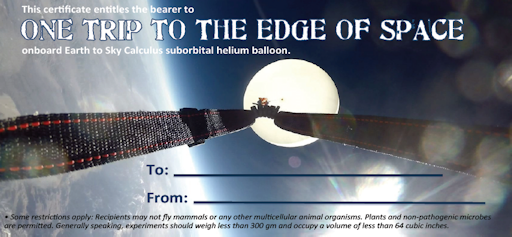Marianne's Heaven On Earth Aurora Chaser Tours Chasethelighttours.co.uk invites you to join them in their quest to find and photograph the Aurora Borealis. Experience the winter wonderland in the Tromsø Area. | | | CHANCE OF CHRISTMAS AURORAS: There's a good chance that moonlight will be mixing with auroras around the Arctic Circle on Christmas night. Earth is passing through a moderately high-speed stream of solar wind, and the action of the wind is sparking geomagnetic activity at high latitudes. Browse the realtime photo gallery for sightings. Solar flare alerts: text or voice HD CHRISTMAS FULL MOON: For the first time since 1977, the Moon is full on Christmas. Bright moonlight is bathing northern snows, turning night into a facsimile of day. In the north of Italy, photographer Giuseppe Petricca took advantage of all the extra photons to create an extraordinary 30-panel mosaic of the lunar disk. Click to view the Christmas Moon in high resolution: 
"I went out in the almost-freezing temperatures of Central Italy to take 30 images, which I assembled in this full-disk mosaic," says Petricca. "The seeing was not as good as I hoped, but the final result is quite interesting nonetheless." Petricca's picture captured some lunar seas that are normally invisible. This is possible because of lunar libration--a slight apparent wobbling of the Moon as it travels around Earth in its elliptical orbit. This movie illustrates the effect. "Because of a strong NE libration on Dec. 25th, we were able to see Mare Humboldtianum, the Mare Marginis and the Smythii: lunar seas that are usually hidden by our view," he explains. Merry Christmas! Realtime Spaceweather Photo Gallery ARMY OF GREEN MEN -- IN SPACE: On Dec. 20th, Spaceweather.com and the students of Earth to Sky Calculus launched their weekly helium balloon to measure cosmic radiation in Earth's atmosphere. This time, there were 56 hitchikers--a platoon of green army men: 
Their mission: to raise awareness of spinal cord injuries. #QuaidsArmy sponsored the flight. On September 20th, 2013, twenty-four year old Quaid Mobus of Warren NJ was in a near fatal ATV accident the night before his sister's wedding. Quaid was left paralyzed, requiring extensive lifelong medical attention. Since then, the Army of Green Men have been traveling far and wide to support Quaid and others like him. Dec. 20th marked their first trip to the stratosphere. Learn more at http://www.armyofgreenmen.com/ Realtime Spaceweather Photo Gallery LAST-MINUTE, OUT-OF-THIS-WORLD CHRISTMAS GIFT: Is there a young scientist in your life? For Christmas, you can give them the gift of exploration--specifically, a trip to the edge of space: 
To raise funds for its student research program, Earth to Sky Calculus is selling a limited number of Holiday Season balloon flights carrying ... whatever you desire. Small experiments. Holiday or anniversary photos. Business advertisements. The sky is the limit. Young people receiving this gift can design their own experiment and attend the launch via Skype. The gift includes a brainstorming session via Skype with Dr. Tony Phillips and the students of Earth to Sky. Cost: $500. Buy now and receive the certificate by email in time for Christmas. Contact Dr. Tony Phillips to book your flight. Realtime Aurora Photo Gallery
Realtime Meteor Photo Gallery
Realtime Comet Photo Gallery
Every night, a network of NASA all-sky cameras scans the skies above the United States for meteoritic fireballs. Automated software maintained by NASA's Meteoroid Environment Office calculates their orbits, velocity, penetration depth in Earth's atmosphere and many other characteristics. Daily results are presented here on Spaceweather.com. On Dec. 25, 2015, the network reported 25 fireballs.
(25 sporadics)  In this diagram of the inner solar system, all of the fireball orbits intersect at a single point--Earth. The orbits are color-coded by velocity, from slow (red) to fast (blue). [Larger image] [movies] Potentially Hazardous Asteroids ( PHAs) are space rocks larger than approximately 100m that can come closer to Earth than 0.05 AU. None of the known PHAs is on a collision course with our planet, although astronomers are finding new ones all the time. On December 25, 2015 there were potentially hazardous asteroids. Notes: LD means "Lunar Distance." 1 LD = 384,401 km, the distance between Earth and the Moon. 1 LD also equals 0.00256 AU. MAG is the visual magnitude of the asteroid on the date of closest approach. | | Cosmic Rays in the Atmosphere | | Situation Report -- Oct. 30, 2015 | Stratospheric Radiation (+37o N) | | Cosmic ray levels are elevated (+6.1% above the Space Age median). The trend is flat. Cosmic ray levels have increased +0% in the past month. | | Sept. 06: 4.14 uSv/hr (414 uRad/hr) | | Sept. 12: 4.09 uSv/hr (409 uRad/hr) | | Sept. 23: 4.12 uSv/hr (412 uRad/hr) | | Sept. 25: 4.16 uSv/hr (416 uRad/hr) | | Sept. 27: 4.13 uSv/hr (413 uRad/hr) | | Oct. 11: 4.02 uSv/hr (402 uRad/hr) | | Oct. 22: 4.11 uSv/hr (411 uRad/hr) | These measurements are based on regular space weather balloon flights: learn more. Approximately once a week, Spaceweather.com and the students of Earth to Sky Calculus fly "space weather balloons" to the stratosphere over California. These balloons are equipped with radiation sensors that detect cosmic rays, a surprisingly "down to Earth" form of space weather. Cosmic rays can seed clouds, trigger lightning, and penetrate commercial airplanes. Our measurements show that someone flying back and forth across the continental USA, just once, can absorb as much ionizing radiation as 2 to 5 dental X-rays. Here is the data from our latest flight, Oct. 22nd: 
Radiation levels peak at the entrance to the stratosphere in a broad region called the "Pfotzer Maximum." This peak is named after physicist George Pfotzer who discovered it using balloons and Geiger tubes in the 1930s. Radiation levels there are more than 80x sea level. Note that the bottom of the Pfotzer Maximim is near 55,000 ft. This means that some high-flying aircraft are not far from the zone of maximum radiation. Indeed, according to the Oct 22th measurements, a plane flying at 45,000 feet is exposed to 2.79 uSv/hr. At that rate, a passenger would absorb about one dental X-ray's worth of radiation in about 5 hours. The radiation sensors onboard our helium balloons detect X-rays and gamma-rays in the energy range 10 keV to 20 MeV. These energies span the range of medical X-ray machines and airport security scanners. | | The official U.S. government space weather bureau | | | The first place to look for information about sundogs, pillars, rainbows and related phenomena. | | | Researchers call it a "Hubble for the sun." SDO is the most advanced solar observatory ever. | | | 3D views of the sun from NASA's Solar and Terrestrial Relations Observatory | | | Realtime and archival images of the Sun from SOHO. | | | from the NOAA Space Environment Center | | | the underlying science of space weather | | | a sponsor of SpaceWeather.com | | | Web-based high school science course with free enrollment | | | the underlying science of space weather | | 
